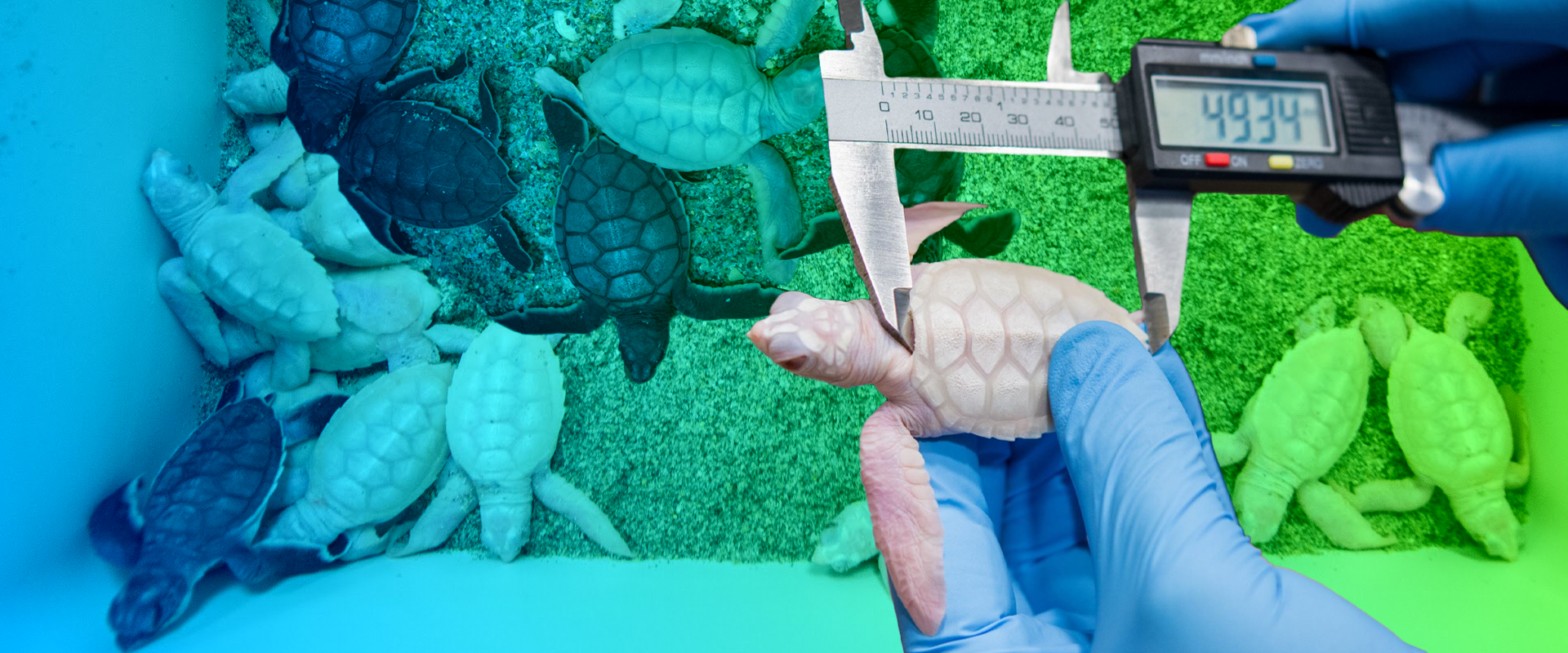03/04/2022
An UnEgg-Spected Surprise
Sharing a Unique Find for World Wildlife Day 2022
By Bethany Augliere
When biologist and FAU alumnus, Justin Perrault, Ph.D., was surveying the beach for green sea turtles one night, he got the surprise of his life — he witnessed a nest emerge where 25% of the hatchlings were albino.
Why were so many of these hatchlings albino and how did their health compare to the normally-pigmented hatchlings, Perrault wondered. “Oftentimes, in captivity, animals with albinism have immune system deficits, and so we wanted to see if that was true of the hatchlings as well.”
Perrault, director of research at Loggerhead Marinelife Center based in Juno Beach, Fla., was already working on a collaborative study with Annie Page-Karjian, D.V.M., Ph.D., clinical veterinarian and assistant research professor at the FAU Harbor Branch Oceanographic Institute to evaluate the health of mother sea turtles, including if they pass on a potentially deadly virus to their babies, and the health of those hatchlings.
This was an opportunity they didn’t want to pass up. “You typically just see one albino individual, if any,” Perrault said. “So a nest that was one-quarter albino is quite rare and hasn't been documented in green turtles in the literature until this study. To my knowledge, it has been documented just one other time in the literature in loggerhead turtles.”
For the study, published in the Journal of Wildlife Diseases, the researchers collected the hatchlings upon emergence, brought them back to the lab, did a physical exam, and collected a small amount of blood. The blood was used to test for a number of different components, called analytes, including electrolytes, minerals, white blood cell counts, and more. “There is, to our knowledge, no data on blood analytes in any free-ranging albino wildlife to date,” Perrault said.
While the researchers found some health differences between the two groups, nothing indicated that the albino hatchlings were unhealthy. “Maybe albino hatchlings are otherwise healthy, aside from their reduced survivorship due to their inability to camouflage,” he said.
Another thing that surprised the researchers was the number of fathers for the nest. “We expected one father and that perhaps the mother and father were both carriers of albinism (which still could be the case),” said Perrault. But genetics revealed the nest to have three different fathers, indicating that the genetics of albinism in sea turtles might be more complicated than we originally thought, he added.
The green sea turtle is protected as an endangered species by the Federal Endangered Species Act and as a federally-designated Endangered species by Florida’s Endangered and Threatened Species Rule. They face threats on land and in the water, from entanglement in fishing gear to habitat loss due to development.
For Page-Karjian, “this interesting finding highlights the importance of regular surveillance and monitoring the health of wildlife populations, a critical but often overlooked component of successful, sustainable management of free-ranging wild animals. The more we know about apparently healthy wildlife species, the better equipped we will be to document, understand, and mitigate stressors that can affect their survival.”
If you would like more information, please contact us at dorcommunications@fau.edu.
